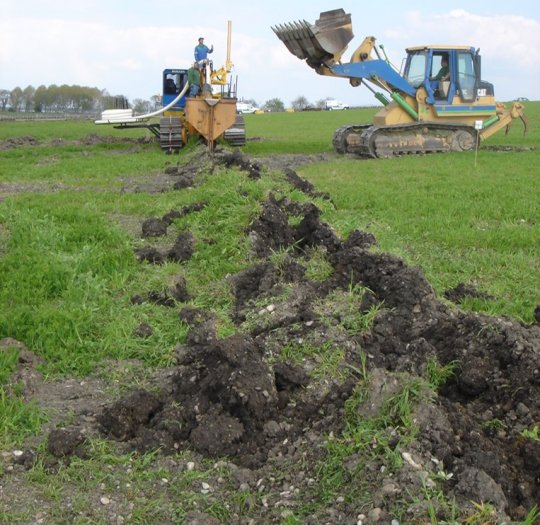A drainage system is intended to create a means to clean the soil by removing water. It is often installed when a parcel of land is located at the bottom of a slope, in the center of a basin, in a flood zone or when it is regularly waterlogged (water saturation). The installation of a subsoil drainage network facilitates the flow of water and limits the risks of water saturation and hypoxia or anoxia of the roots.
1.3.1.a Setting up a drainage system
Installing a drainage network is done following uprooting, but before the soil has rested. Generally carried out by a professional contractor service, the installation consists of digging deep (3 to 4 meters) trenches (sumps) where the water accumulates most, in which a network of perforated pipes or drains are placed. These are then connected to larger collection pipes as well as to a drain (manhole or well).
The system is then covered with washed rolled gravel and soil to facilitate drainage of the water to the pipes (the coarser the material, the better the water flows since the holding capacity is lower in these gaps).
Once the drains are installed, bulldozing may be necessary to reshape the soil. Subsoiling or decompacting may also be necessary to loosen the soil.



